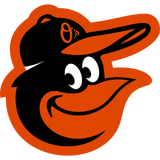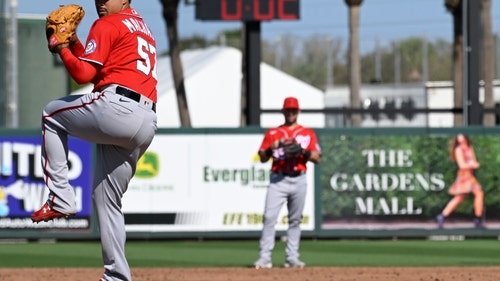
Yovani Gallardo, The New Mariners Project
Seattle Mariners General Manager Jerry Dipoto wakes from nearly a month-long slumber, wipes sleep from his eyes, and promptly makes two trades involving four major leaguers, and falls back asleep. We take a look at the Mariners’ return from the first trade, starting pitcher Yovani Gallardo.
The freewheeling trade machine that is the Seattle Mariners’ GM is back at it. After not making a trade since December 9th, Dipoto dealt outfielder Seth Smith, Seattle’s favorite baseball Dad.
In return, they added a much-needed back-of-the-rotation arm, the 30-year-old pitcher from the Baltimore Orioles, Yovani Gallardo.
After experiencing Smith for the past two years, I think many are aware of what the Mariners lost, now let us familiarize ourselves with what they gained.
If you’re not familiar at all with Gallardo, he was once an All-Star pitcher and worth more than 4.5 wins in 2010.
He’s been worth at least 2 Wins Above Replacement (WAR) every year since, mostly with the Milwaukee Brewers and eventually with the Texas Rangers in 2015.
Every year that is, until last year, when he was barely worth half a win in an injury-riddled campaign in which he threw his least amount of innings since he became a major league regular.
As such, there will be a lot of contention surrounding this trade. Smith was a likable and productive platoon player and Gallardo is coming off of the worst season of his career. But Dipoto has a track record for a transaction of this sort.
A year ago he also acquired players coming off of down years, trading peanuts for Leonys Martin (peanuts that he got back) and signing Chris Iannetta to a friendly deal.
Both players performed respectively after joining the Mariners. It’s possible that Dipoto sees something under the surface with Gallardo.
When Gallardo was a member of the Orioles, he was awful. He had an ERA over 5 and a Fielding Independent Pitching (FIP) that nearly matched, leading us to believe that he truly was as bad as his surface stats, and not simply a victim of bad luck.
He had devolved from a strikeout pitcher at his best with Milwaukee, to a ground ball pitcher with Texas and eventually became about league-average for all batted ball types with an increased fly ball rate with Baltimore.
Now, there’s nothing wrong with an increased fly ball rate, so long as contact-induced is weak.
Max Scherzer and Justin Verlander are both near the top of the league in fly ball percentage and both are among the five best pitchers in the league.
There is however something wrong with it when the pitcher’s home run ratio increases too.
| Fly ball percentage | Homerun/Fly ball Ratio | |
| Gallardo – 2015 | 28.7% | 8.8% |
| Gallardo – 2016 | 36.7% | 11.7% |
| League Average | 35% | 9.5% |
With a near league average fly ball rate, you may be thinking that Gallardo was simply a victim to his own park factor and that expansive Safeco Field would have contained some of these bombs.
Camden Yards, after all, is a cozy stadium where balls can soar, and the rest of the American League East is no different. But if you overlay all 16 of Gallardo’s home runs in Safeco Field, it would still be 16 home runs.
This isn’t the end of Gallardo’s 2016 problems, however, in addition to his fly ball and home run rate increasing, he also walked hitters well above any rate since his rookie season and points to a stark contrast between his 2015 and 2016 season.
| Walk Percentage | |
| Gallardo – 2015 | 8.6% |
| Gallardo – 2016 | 11.6% |
| League Average | 8% |
So now we have this guy that is walking hitters at a career high rate and also giving up dingers at a career high rate. And he isn’t making up this ground in other ways by striking out a lot of batters.
These things explain how he fell off of the cliff from one year to the next, but there could be a possible remedy.
Pitching coaches and pitching philosophy matter. I profiled Tom Wilhelmsen last year to explain the struggles and later his mini-resurgence during his adventure from the Mariners to the Rangers and back to the Mariners again. And it can be described simply as pitch craft.
As pitchers get older they begin to lose the natural athleticism that made them great to start their careers. In this juncture of their career, they can choose plow forward with diminishing athletic traits, or they can adopt different methods of pitching.
This translates to pitch sequencing, location and finesse more than overwhelming power and movement.
When taking a very quick look at Gallardo’s pitch types and locations a couple of things stood out. The first is a steep drop in his first pitch strikes from 2015 to 2016, a number that in 2016 at 54%, is the lowest of his career since he was a rookie.
More from SoDo Mojo
The Orioles as a team were 29th in the league in regards to first pitch strikes, the Mariners, on the other hand, were 9th in the league.
In addition to Gallardo’s first pitch strike rate, the location in which he pitched changed drastically from Texas to Baltimore. Look at the pitch % chart from 2015 with Texas, and compare with the same chart from 2016 with Baltimore.
From the middle of the zone (belt high) and above, Gallardo increased his pitch count in those areas by more than 7%. Pitches that are belt high and above in the zone are more likely to induce fly balls, and for pitchers with diminishing velocity are also more likely to induce strong contact.
It’s possible that Gallardo at this point in his career is broken and that these trends have no correlation to his future performance. Yet I also believe that Dipoto and his team are good at their jobs and have done their due diligence.
The Mariners traded an aging platoon outfielder and bought low on a back of the rotation starter.
If they lose this trade they won’t be losing much, but if they win, they could be winning a lot more than just this trade. They could have added an important piece on their quest for the playoffs.



